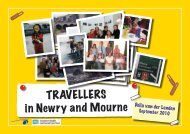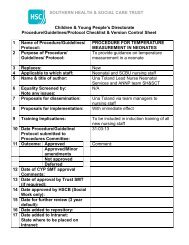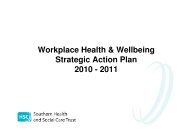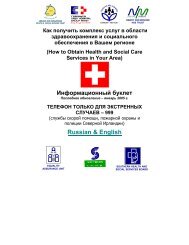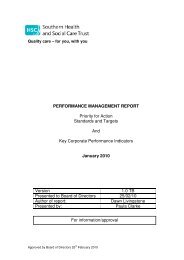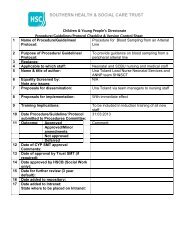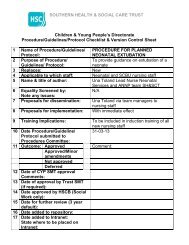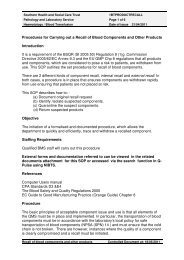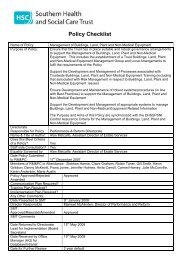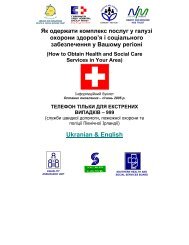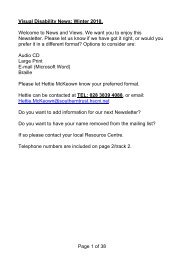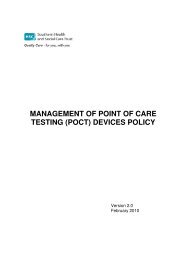First Aid at Work Procedure - Southern Health and Social Care Trust
First Aid at Work Procedure - Southern Health and Social Care Trust
First Aid at Work Procedure - Southern Health and Social Care Trust
You also want an ePaper? Increase the reach of your titles
YUMPU automatically turns print PDFs into web optimized ePapers that Google loves.
APPENDIX 4.0Suggested numbers of first-aid personnel to be available <strong>at</strong> all times people are <strong>at</strong>work1. From your riskassessment, wh<strong>at</strong>degree of hazard isassoci<strong>at</strong>ed with yourwork activities?2. How many employeesdo you have?3. How many first aid personneldo you need?Lower Hazard e.g.offices, clinics, ward.Higher Hazard e.g.extensive work withhazardous machineryor sharp instruments.Examples includelaundry, c<strong>at</strong>ering.Residential <strong>and</strong> Day<strong>Care</strong> Setting1 – 50 At least one first-aider trained inEFAW 1More than 50At least one first-aider trained inFAW 2 for every 100 employed (orpart thereof)1-50 At least one first-aider trained inEFAW of FAW depending on thetype of injuries th<strong>at</strong> might occurMore than 50Not applicableAt least one first-aider trained inFAW for every 50 employed (or partthereof)All residential <strong>and</strong> day care stafftrained in EFAW 1 in accordancewith requirements of RQIA4. Wh<strong>at</strong> injuries <strong>and</strong>illnesses havepreviously occurredin your workplace?5. Have you takenaccount of thefactors listed th<strong>at</strong>may affect your firstaid provision?• Ensure any injuries <strong>and</strong> illnesses th<strong>at</strong> might occur can be dealtwith by the first-aid personnel you provide• Where first-aiders are shown to be unnecessary, there is still apossibility of an incident or sudden illness, so you may wish toconsider providing qualified first-aiders• Inexperienced workers or employees with disabilities orparticular health problems• Employees who travel a lot, work remotely or work alone• Employees who work shifts or out of hours• Premises spread out across buildings/floors• <strong>Work</strong>place remote from emergency medical services• Employees working <strong>at</strong> sites occupied by other employers• Planned <strong>and</strong> unplanned absences of first-aiders/appointedpersons• Members of the public who visit the workplace or others on site1 EFAW – Emergency <strong>First</strong> <strong>Aid</strong> <strong>at</strong> <strong>Work</strong>2 FAW – <strong>First</strong> <strong>Aid</strong> <strong>at</strong> <strong>Work</strong>Page 10 of 12



